Unpacking Neonomadism: The Ultimate Guide to Full-Time Mobile Living


Do you dream of traveling the world while still being able to work and earn a living? If so, you might be interested in neonomadism – a lifestyle that combines work and travel in a flexible and sustainable way.
In recent years, the emergence of Neonomadism has challenged the traditional way of living and working. Neonomads are individuals who lead a full-time mobile life, seeking fluid and flexible lifestyles as society continues to change. In this lifestyle, individuals may move frequently, either within a single country or across different countries, in search of new experiences, opportunities, or simply for the sake of adventure.
As technology continues to offer global connectivity, more and more people are adopting a nomadic lifestyle, starting their businesses, volunteering, and socializing with locals at their new locations. This growing trend has led to a need to review the traditional spaces used in mainstream architecture. By examining the behavior patterns, types of travel, and needs of neonomads, we can gain insight into their expectations from living spaces.
Neonomadic Acts
Neonomadism can be defined somewhere between a permanent migration act and temporary travel acts.
One of the main advantages of this act is the ability to achieve a better work-life balance. Neonomads are able to travel and work from anywhere in the world, allowing them to experience new cultures and explore new places while still earning a living. This can lead to increased creativity, inspiration, and motivation in their work.
Neonomadism can also be a more sustainable lifestyle choice. By not being tied to a fixed location, neonomads can reduce their carbon footprint and live a more minimalist lifestyle. They may also be able to save money by living in more affordable locations and taking advantage of travel rewards programs.
Academic researcher Richards Greg from Tilburg University conducted a survey of 34,000 young people worldwide to gain insights into this neo-nomadic lifestyle. He identified three types of nomads: backpacker travelers, digital nomads, and global nomads.
Let’s take a closer look at these groups;
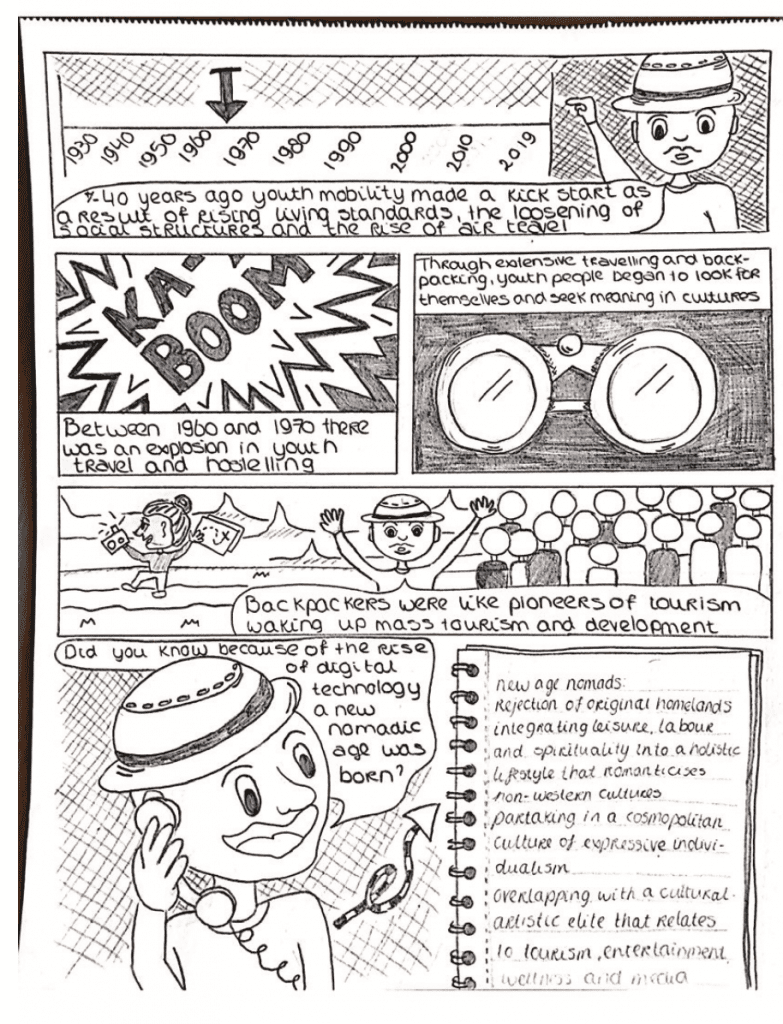

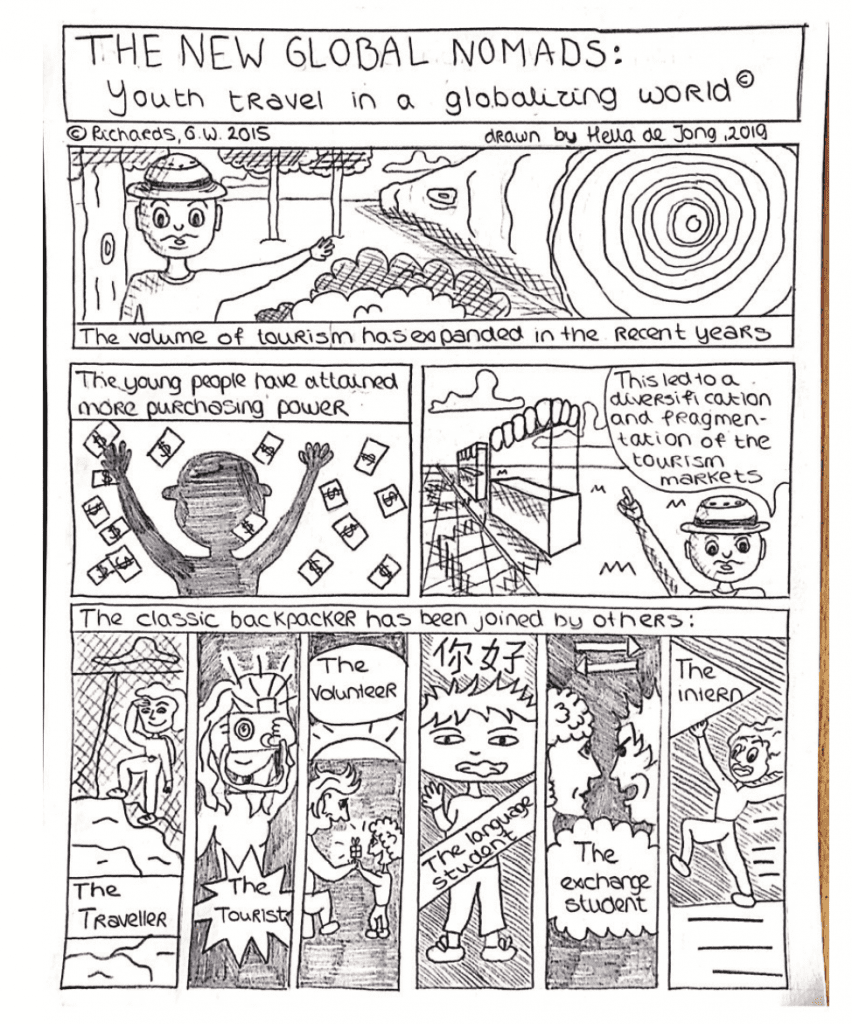

Backpackers
Backpackers are a diverse group of travelers who typically travel on a budget and carry their belongings in a backpack. They plan their schedule flexibly and are open to changing their plans. They often stay in hostels, guesthouses, or other budget accommodations, and seek out experiences that are off the beaten path or away from tourist hotspots.
Backpackers can include people from a wide range of backgrounds and ages, but they tend to share a few common characteristics. They often prioritize experiences over material possessions and are interested in immersing themselves in local cultures and communities. They may be adventure seekers who enjoy outdoor activities such as hiking or kayaking, or cultural enthusiasts who enjoy visiting museums, art galleries, and historical sites. Backpacking can be a great way to see the world on a limited budget, meet new people, and gain a deeper understanding of different cultures and lifestyles.
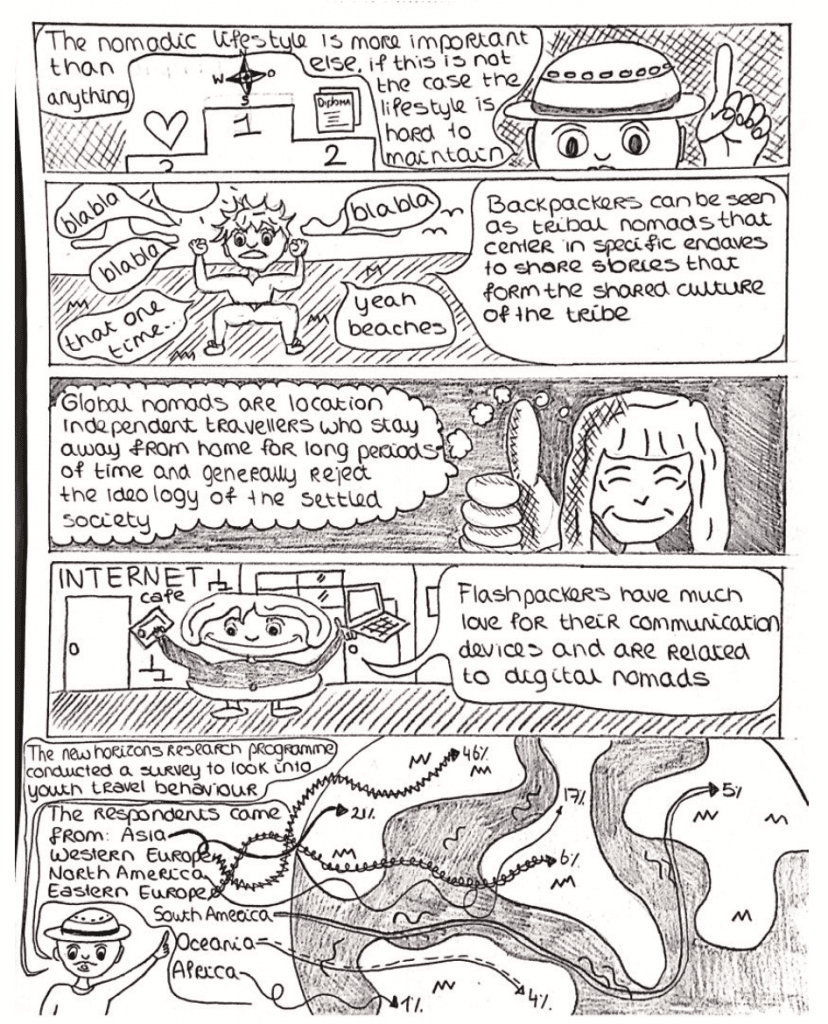

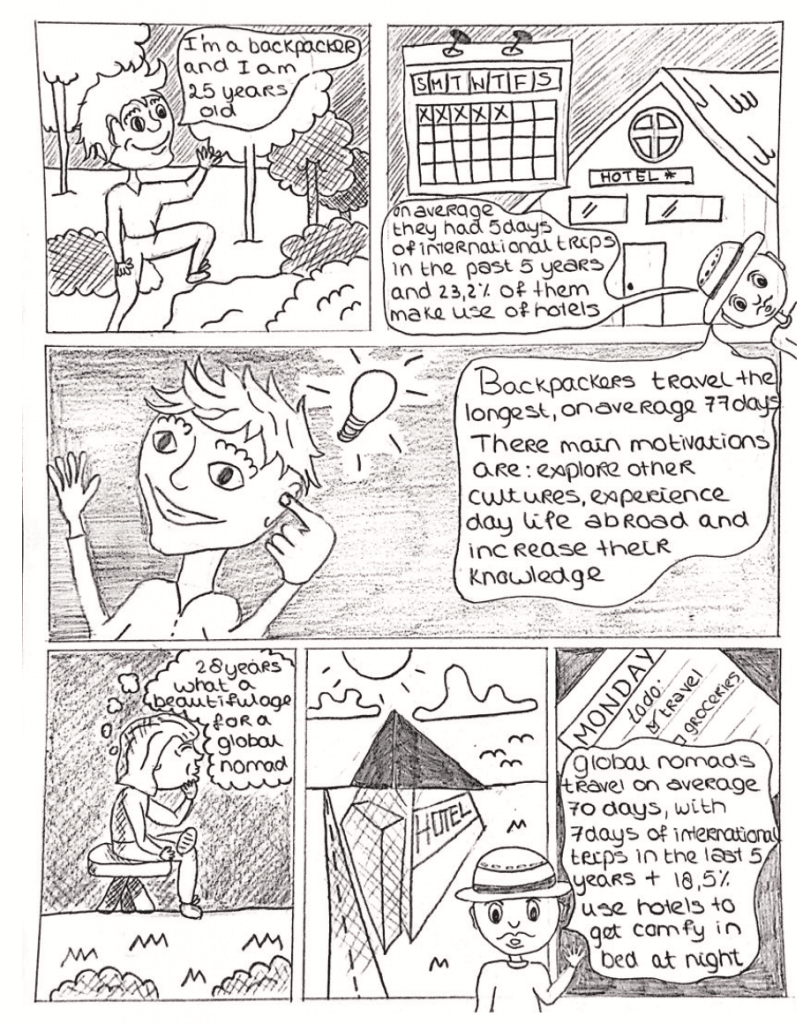

Global nomads
Global nomadism is a lifestyle where individuals or families live and work in multiple countries and cultures throughout their lives, often for a minimum of three years. They reject settled society’s views and adopt an international perspective, valuing freedom, international contacts, and leisure time over fixed routines and work. Global nomads blur the boundaries of action and time and may not rely on technology to live on the move. They live a minimalist life and prioritize spending time with friends, living healthier, or doing meaningful things over making money.
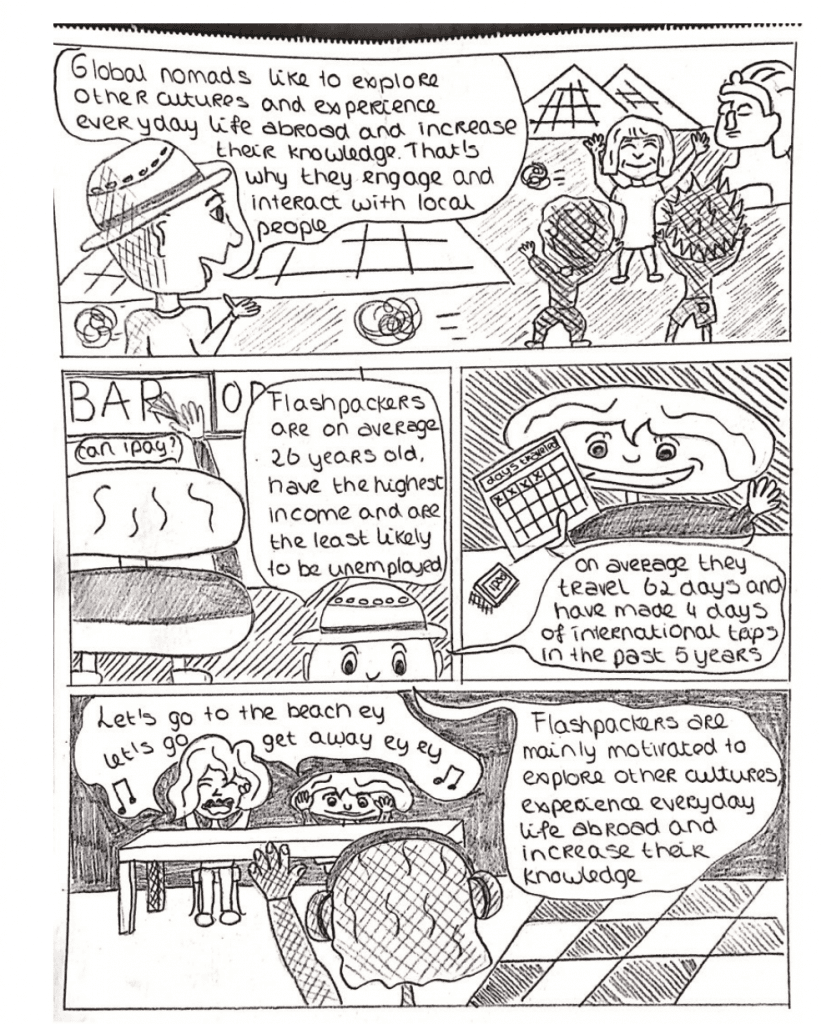

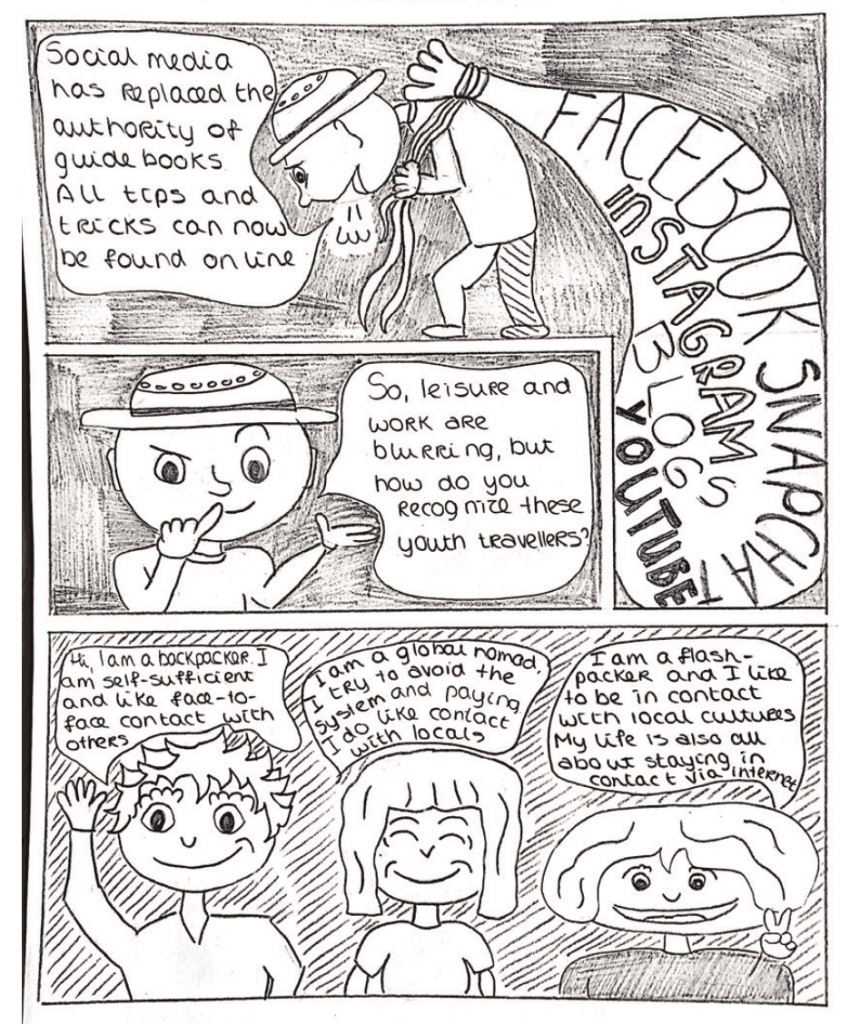

Digital nomads
Digital nomadism is a lifestyle in which people work remotely and travel the world. They use technology to stay connected with their clients, colleagues, and projects while being free to move from place to place. Digital nomads are often freelancers, entrepreneurs, or remote workers who have the ability to work from anywhere with an internet connection.
As the popularity of digital nomadism continues to grow, some countries have taken notice and are beginning to offer programs designed to make it easier for digital nomads to live and work in their countries. These programs can include attractive taxation, visa-free accommodation, e-residence, and digital nomad visa programs. Examples of such programs include the Smart Visa in Thailand and the Digital Nomad Visa in Estonia. These initiatives are helping to reshape the traditional notion of work and travel, making it easier than ever before for people to explore the world while maintaining their professional pursuits.
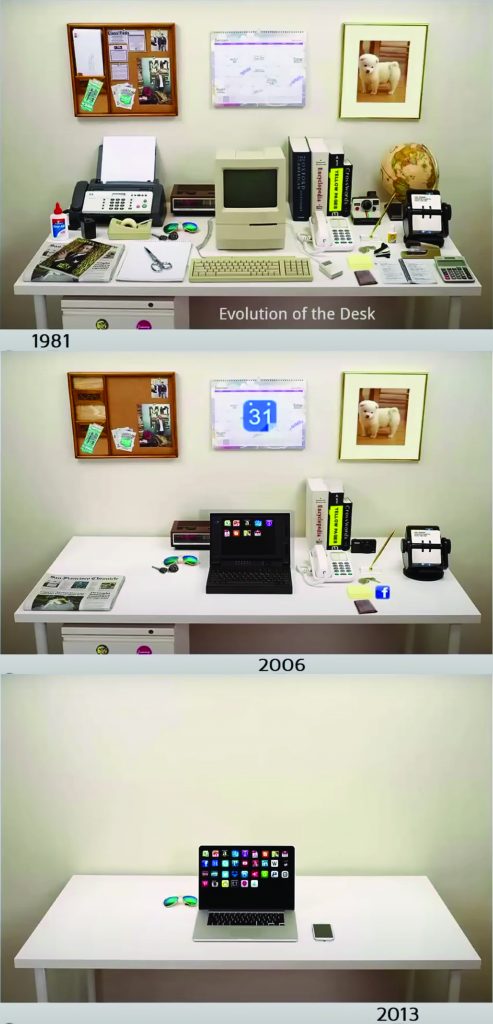

Lab- 1980-2005-2014, by dougthomsen.tv
Digital nomadism has numerous advantages that make it an attractive lifestyle for many people. One of the biggest benefits is the freedom to work from anywhere in the world, as long as there is a stable internet connection. This allows digital nomads to travel while still being able to earn a living, which can lead to new experiences, cultural immersion, and personal growth.
Additionally, digital nomads have a flexible schedule and can work at their own pace, which can result in improved work-life balance. Moreover, being a digital nomad can offer opportunities to develop new skills, build a global network of contacts, and create a diverse portfolio of work experience.
Minimalist living spaces are emerging as one of the most suitable options for neonomads, as they prioritize functionality and simplicity. These spaces are designed to allow neonomads to move easily from one location to another, maximizing efficiency and minimizing clutter. These spaces are designed to allow neonomads to move easily from one location to another, maximizing efficiency and minimizing clutter. Multifunctional and easily transportable furniture is also important as it provides a fast and smooth transition to a new living space. To learn more about minimalist living, we invite you to check out our blog post, “The Art of Minimalist Living: Exploring the Rising Trend of Minimalist Spaces in the 21st Century“
Our vision at Serai is to provide you with an experience that combines the freedom of nomadic living with the convenience of modern technology. Our AI-supported living spaces offer a seamless integration of technology and comfort, so you can spend your day like a pastoral nomad while staying connected to the digital world.
References
Caricatured narrative drawn of Neonomads, Hella de Jong, 2019,
Anthony D’Andrea, Global Nomads. Techno and new age as transnational countercultures in Ibiza and Goa (London: Routledge, 2009) 39
Richards Greg, “The New Global Nomads: Youth Travel in a Globalizing World,” Tourism Recreation Research 40, no. 3 (2015): 340-352.
Bauman,. Liquid Times: Living in an Age of Uncertainty, 55.
Martin Bell, and Gary Ward, “Comparing Temporary Mobility with Permanent Migration”. Tourism Geographies. 2, no. 1, (2000): 87-107.
Päivi Kannisto, “Global nomads: Challenges of mo- bility in sedentary World” (PhD diss., Tilburg University, 2014).


